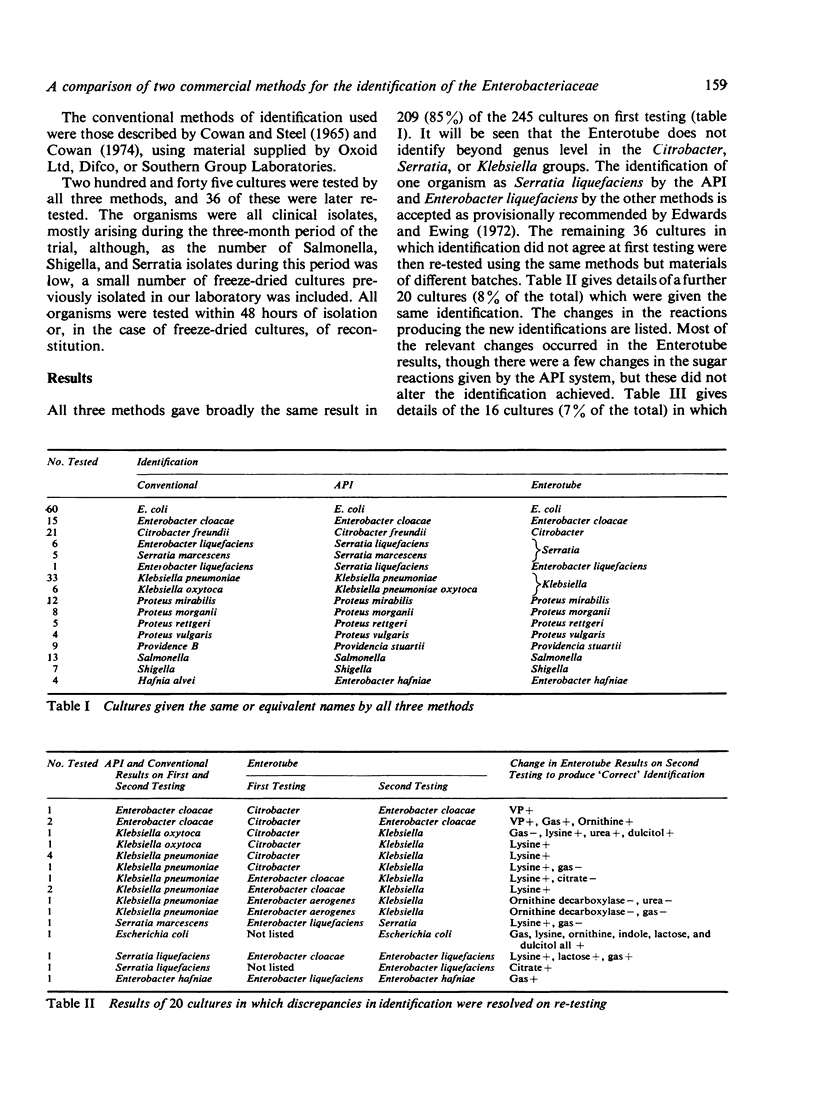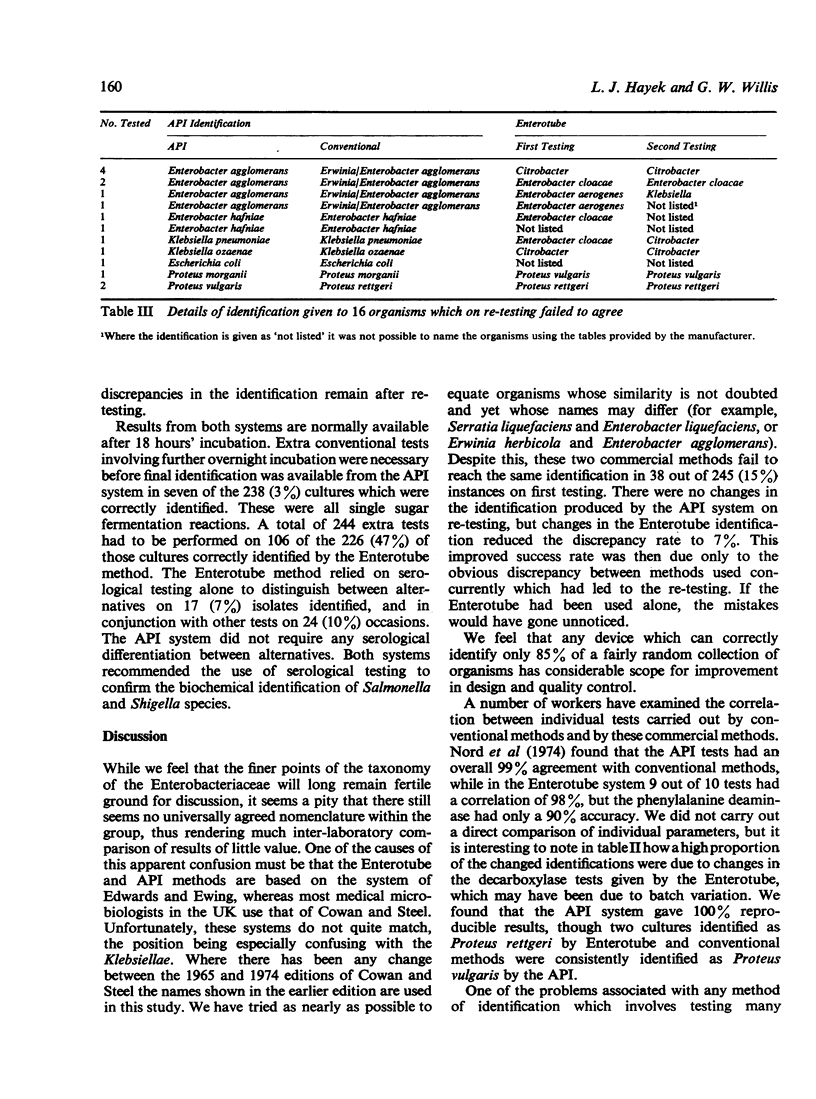Abstract
The API 20E, the Enterotube, and routine methods of Cowan and Steel were used in parallel to identify 245 members of the Enterobacteriaceae. The API 20E and conventional methods gave the same identification in all but 2 (0-8%) of the 245 organisms tested. The Enterotube correctly identified 85% of these organisms on the first testing. On re-testing those organisms incorrectly identified the Enterotube results agreed with the conventional ones in a further 20 (8%). There was no change in the identification obtained by the API or conventional methods. Further conventional sugar tests were necessary before final identification was available by the API system in 7 (3%) against 106 (47%) of the 226 organisms correctly identified by the Enterotube. The Enterotube relied on serological testing alone to distinguish between alternatives in 17 (7%) isolates. Other advantages and disadvantages of these systems are discussed.
Full text
PDF



Selected References
These references are in PubMed. This may not be the complete list of references from this article.
- Nord C. E., Lindberg A. A., Dahlbäck A. Evaluation of five test-kits-API, AuxoTab, Enterotube, PathoTec and R-B-for identification of Enterobacteriaceae. Med Microbiol Immunol. 1974 Mar 22;159(3):211–220. doi: 10.1007/BF02121337. [DOI] [PubMed] [Google Scholar]


